Ancient Mars Could Have Supported Life (Photos)
First Curiosity Drilling Sample in the Scoop
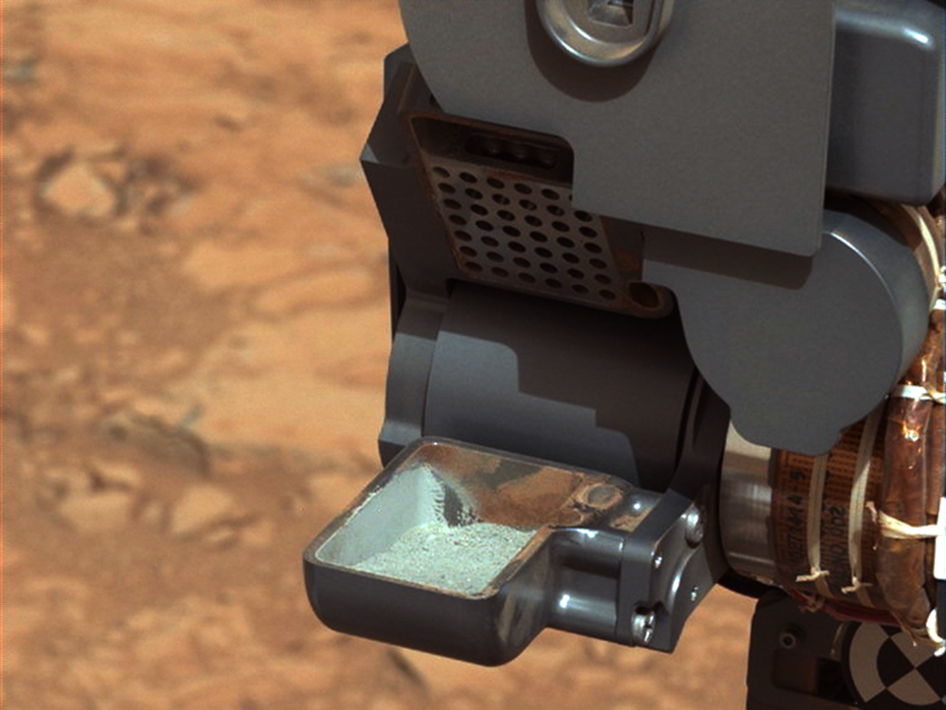
This image from NASA's Curiosity rover shows the first sample of powdered rock extracted by the rover's drill. The image was obtained by Curiosity's Mast Camera on Feb. 20, or Sol 193, Curiosity's 193rd Martian day of operations.
Analysis of the sample revealed that Mars was once habitable for primitive life about 3.8 billion years ago, NASA scientists announced March 12, 2013. [Full Story]
Location of John Klein Drill Site
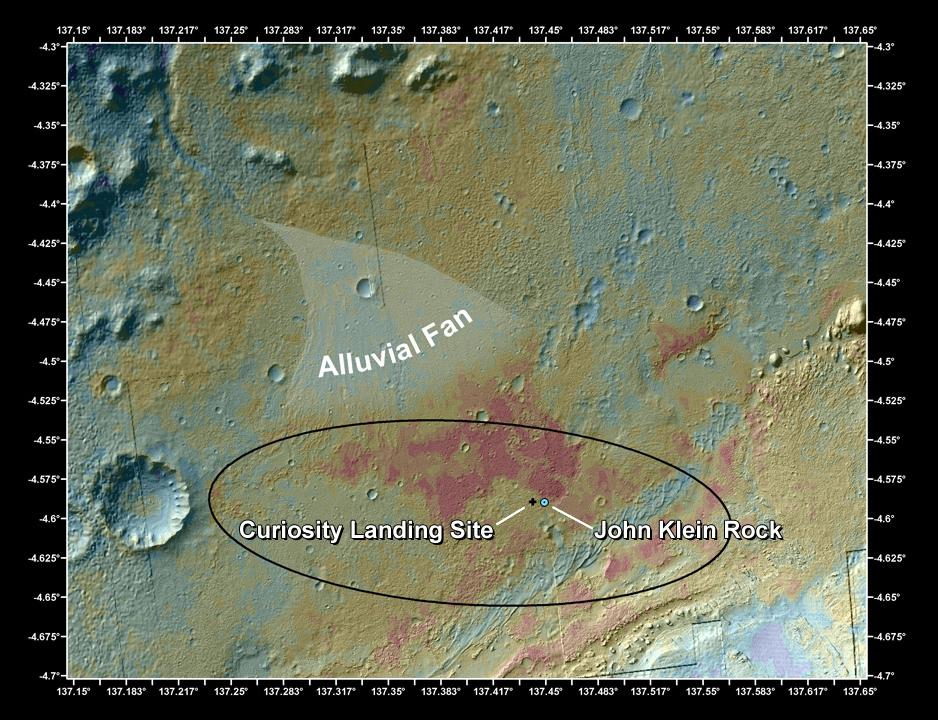
This false-color map shows the area within Gale Crater on Mars, where NASA's Curiosity rover landed on Aug. 5, 2012 PDT (Aug. 6, 2012 EDT) and the location where Curiosity collected its first drilled sample at the "John Klein" rock. Image released March 12, 2013. [Full Story]
Curiosity's First Sample Drilling
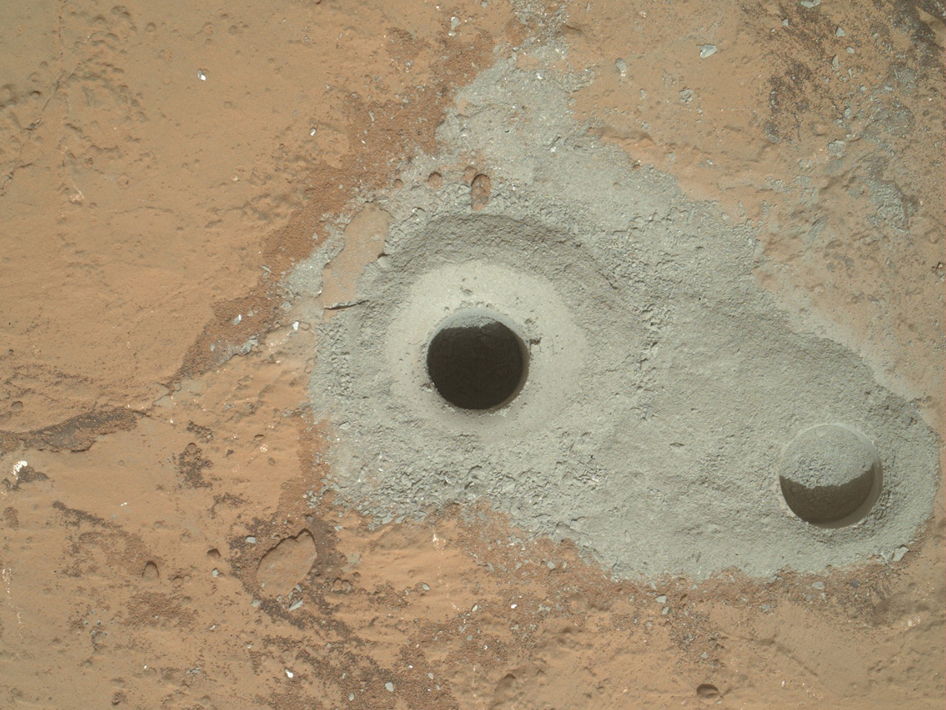
At the center of this image from NASA's Curiosity rover is the hole in a rock called "John Klein" where the rover conducted its first sample drilling on Mars. The drilling took place on Feb. 8, 2013, or Sol 182, Curiosity's 182nd Martian day of operations.
Analysis of the sample revealed that Mars was once habitable for primitive life about 3.8 billion years ago, NASA scientists announced March 12, 2013.[Full Story]
Minerals at 'Rocknest' and 'John Klein'
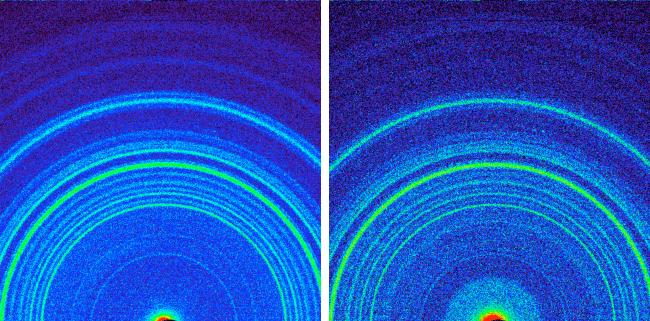
This side-by-side comparison shows the X-ray diffraction patterns of two different samples collected from the Martian surface by NASA's Curiosity rover. Image released March 12, 2013. [Full Story]
Two Different Aqueous Environments

This set of images compares rocks seen by NASA's Opportunity rover and Curiosity rover at two different parts of Mars. On the left is " Wopmay" rock, in Endurance Crater, Meridiani Planum, as studied by the Opportunity rover. On the right are the rocks of the "Sheepbed" unit in Yellowknife Bay, in Gale Crater, as seen by Curiosity. Image released March 12, 2013. [Full Story]
An Earth Analog to Mars' Yellowknife Bay
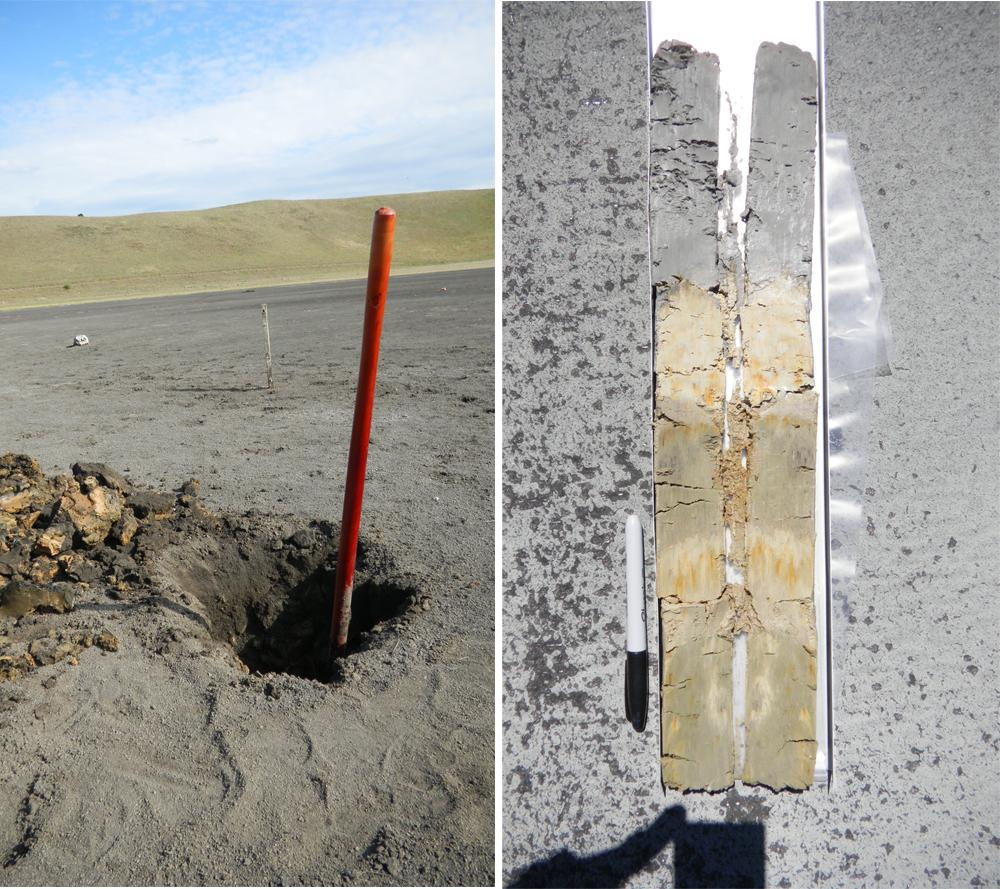
This set of images shows a modern terrestrial analog to the "Yellowknife Bay" area that NASA's Curiosity rover is exploring. At left is a sampling pit exposing clay-bearing lake sediments, deposited in a basaltic basin in southern Australia. At right is a core sample from the lakebed, showing clay-rich, layered sediments. Image released March 12, 2013. [Full Story]
Studying Habitability in Ancient Martian Environments
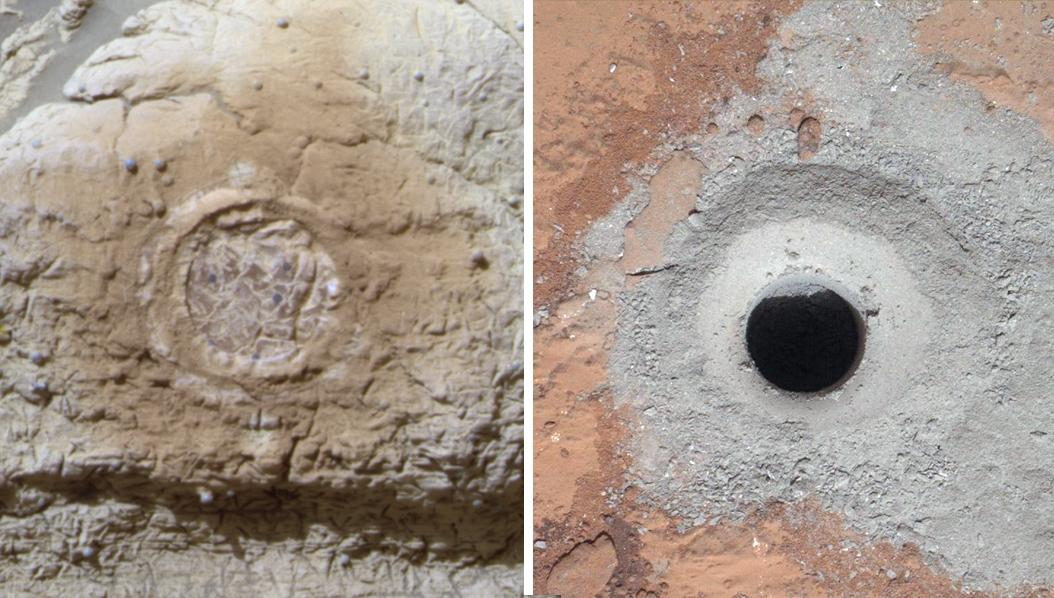
This set of images shows the results from the rock abrasion tool from NASA's Mars Exploration Rover Opportunity (left) and the drill from NASA's Curiosity rover (right). Note how the rock grindings from Opportunity are brownish red, indicating the presence of hematite, a strongly oxidized iron-bearing mineral. Image released March 12, 2013. [Full Story]
Get the Space.com Newsletter
Breaking space news, the latest updates on rocket launches, skywatching events and more!
Major Gases Released from Drilled Samples of the "John Klein" Rock
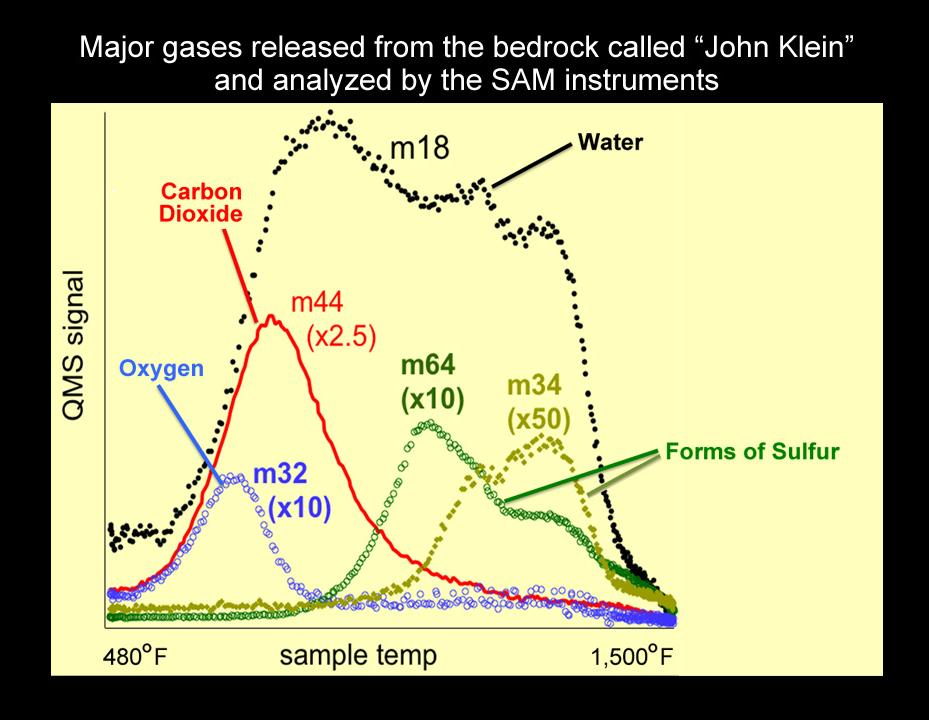
An analysis of a drilled rock sample from NASA's Curiosity rover shows the presence of water, carbon dioxide, oxygen, sulfur dioxide, and hydrogen sulfide released on heating. The results analyzing the high temperature water release are consistent with smectite clay minerals. Image released March 12, 2013. [Full Story]
Chlorinated Forms of Methane at "John Klein" Site
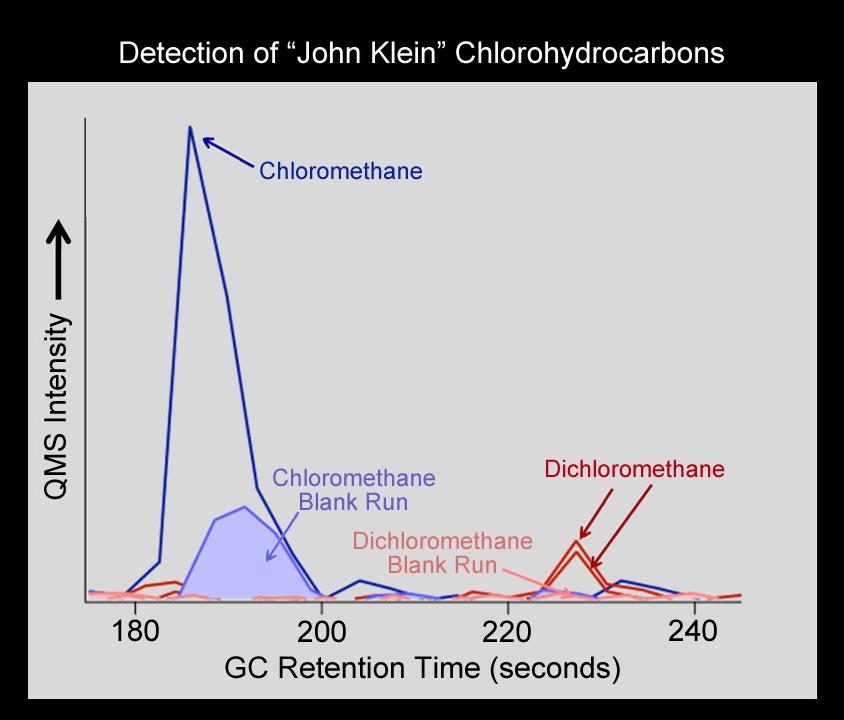
NASA's Curiosity rover has detected the simple carbon-containing compounds chloro- and dichloromethane from the powdered rock sample extracted from the "John Klein" rock on Mars. These species were detected by the gas chromatograph mass spectrometer (GCMS) on Curiosity's Sample Analysis at Mars instrument (SAM). Image released March 12, 2013. [Full Story]
Curiosity Rovers 1st Mars Sample Drill Site (Raw Color)
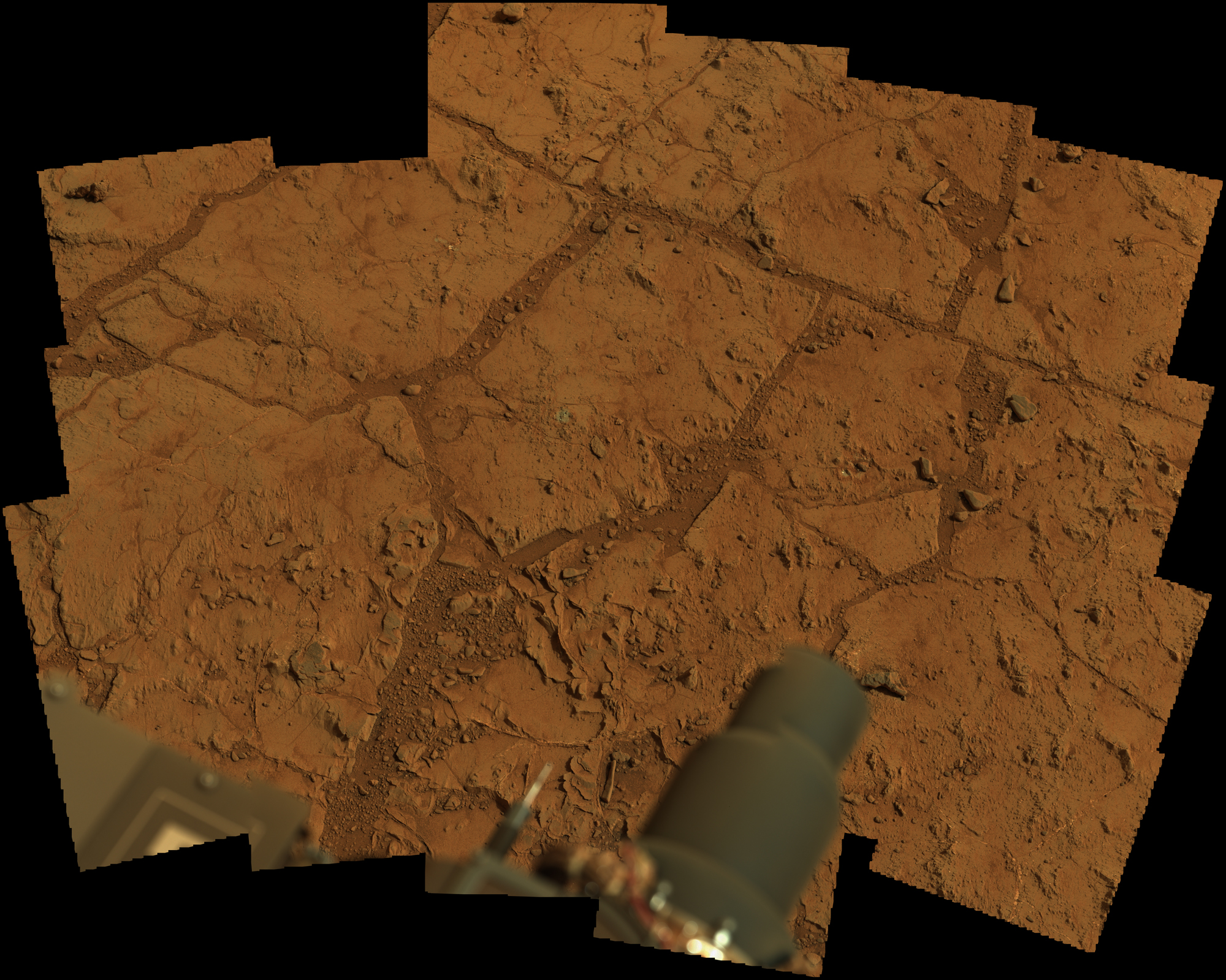
NASA's Mars rover Curiosity used its Mast Camera (Mastcam) to take the images combined into this mosaic of the drill area, called "John Klein." The rover conducted its first sample drilling on Feb. 8, 2013.
Mars Rover Curiosity's 1st Drill Sample Site (Annotated)
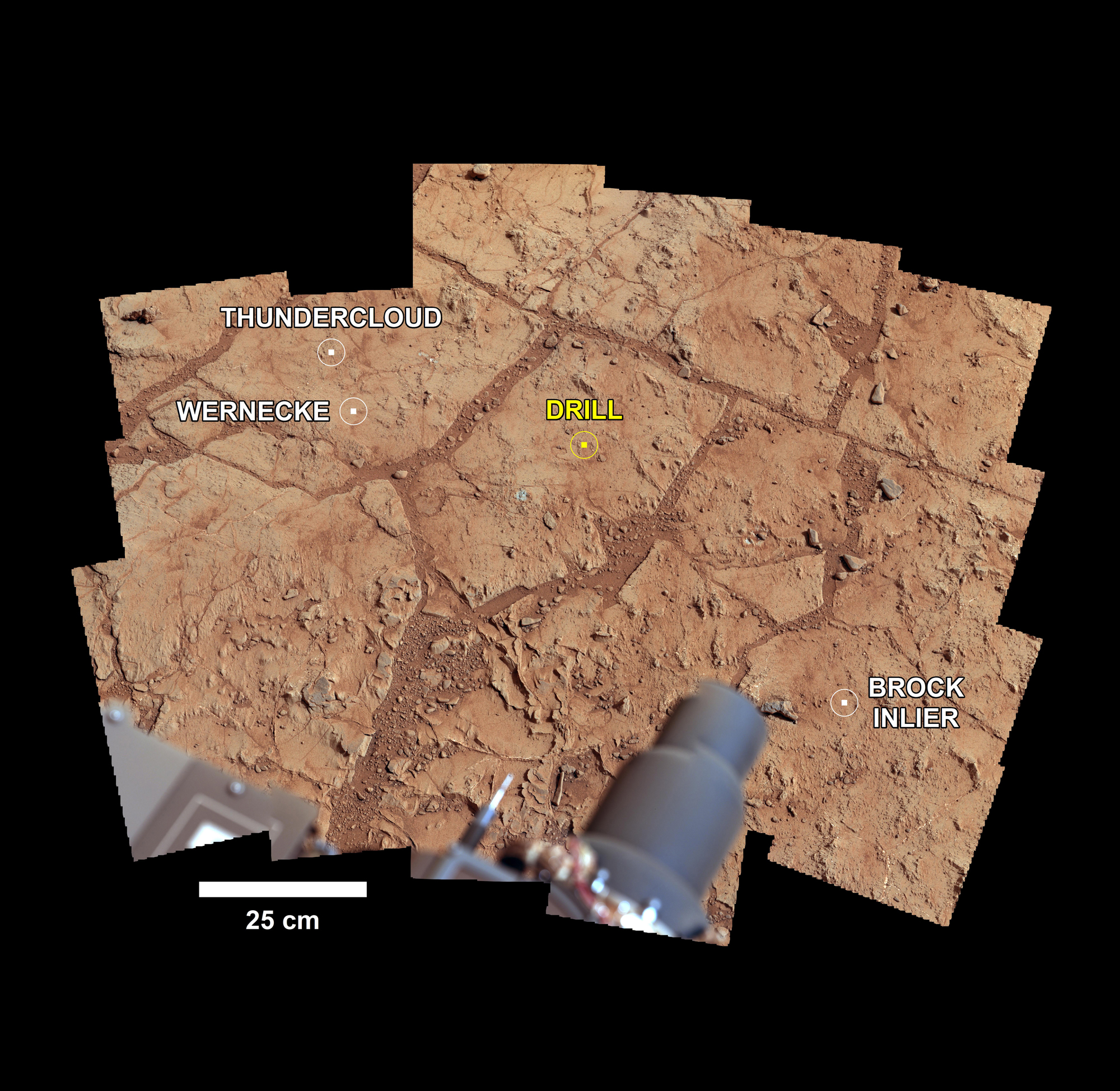
NASA's Mars rover Curiosity used its Mast Camera (Mastcam) to take the images combined into this mosaic of the drill area, called "John Klein." The label "Drill" indicates where the rover ultimately performed its first sample drilling on Feb. 8, 2013.
Join our Space Forums to keep talking space on the latest missions, night sky and more! And if you have a news tip, correction or comment, let us know at: community@space.com.

Space.com is the premier source of space exploration, innovation and astronomy news, chronicling (and celebrating) humanity's ongoing expansion across the final frontier. Originally founded in 1999, Space.com is, and always has been, the passion of writers and editors who are space fans and also trained journalists. Our current news team consists of Editor-in-Chief Tariq Malik; Editor Hanneke Weitering, Senior Space Writer Mike Wall; Senior Writer Meghan Bartels; Senior Writer Chelsea Gohd, Senior Writer Tereza Pultarova and Staff Writer Alexander Cox, focusing on e-commerce. Senior Producer Steve Spaleta oversees our space videos, with Diana Whitcroft as our Social Media Editor.









